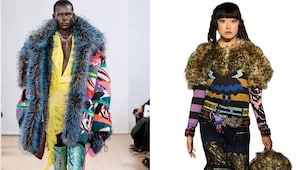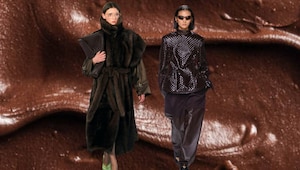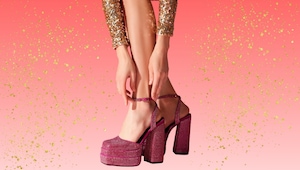4 Photographers Whose Striking Portraits Capture the Beauty of India
These photographers use the power of the lens to tell compelling narratives through portraits...that speak volumes.
By undefined
04 March, 2020
These photographers use the power of the lens to tell compelling narratives through portraits...that speak volumes.

1@9magdalena9@9magdalena9
“We often hear that eyes are the window to the soul. As a photographer, I can tell you they are. It’s by looking into a person’s eyes that we get a genuine glimpse of their character, their emotions, and who they really are. It allows us to ‘connect’ with them, and this connection is my greatest inspiration. One such person I met was Papu—seen here with her daughter, Mamtu—at the Pushkar Fair in Rajasthan. She’s known as the ‘Queen of the Desert’ because of her beauty. Papu ran a little tent-shop of trinkets at the fair, and as I spent hours with her, she told me stories about her life, including that when she was younger, she was flown to Paris to take part in a fashion show. The two made for such a strong image. Creating such portraits that evoke a feeling or response from the viewer is what drives me.”

2Tanvi Jaiswal@tanvijaiswal
“I’m a shy person, so talking to strangers is a challenge. But the camera gave me a medium to ‘talk’ to people without letting any inhibitions—theirs or mine—get in the way. I photograph people I meet in everyday life, who have interesting stories to share. The lens, then, becomes a mirror, reflecting their tales. Take this old man, for example. He looked shabby, and seemed to be labouring on the streets. But something about his face made me want to photograph him. As we warmed up, he started speaking to me in English, and, among other things, told me he had actually been educated in Germany. The best images, I feel, are created when the subject isn’t conscious of the camera. And this gentleman, as you can tell, was a natural.”

3@saunakspace@saunakspace
“Portraiture has always been my go-to form of expression into how I see the world and people. Typically, I like to work with my subject on a concept or theme, and the outcome is geared to convey a message. I want to be able to showcase the beauty and diversity of people, the unspoken narratives, the hidden talent, the power of colour...exemplified through a sense of space, identity, and storytelling. Like Rajat (seen in this picture). I photographed him in Khari Baoli, Delhi, as part of the concept of ‘role reversal’. The purpose of my work is to bring to the fore issues that are important to me as an Indian-born queer minority person of colour living in New York. I wish to evoke conversations around topics such as identity, sexuality, self-confidence, and the like, that I feel are greatly needed but are often missing in mainstream media.”

4@purplekarma@purplekarma
“I like to capture emotions. It intrigues me. But photographing people is difficult. Once in front of the camera, most of them get conscious and try to conceal as much as possible. That’s why I try to interact with them before the shoot—talk, listen, bond...but without startling them or getting over-familiar. It’s a slow process, which means sometimes I even end up not taking any photographs at all. But it helps me connect with people on a deeper level. And that’s very crucial because I seek to showcase their inner turmoil—that they don’t want others to see—without really spelling it out. I work extensively with the under-served communities. Their lives are hard, and it shows in the images...you can discern it. And mostly, all they need is someone to talk to.”
Comment
more from Life

The chicest fashion finds inspired by art

The coolest style picks to bookmark right now

8 stylish clutches that prove every holiday outfit needs a statement sidekick

Exciting holiday gift ideas for people who want claim to want "nothing"

Clashing prints and bold colours are fashion’s favourite chaos and here’s how you can wear them right

Hot chocolate season has arrived and it's time your wardrobe got the memo

Your party calendar knows that it’s sparkly heels season! Here are our picks

From power florals to sultry musks, we’ve decoded the perfumes that vibe with every version of you

The ultimate rhinestone edit for your most extra holiday fashion moments

Lit Christmas gifts that deserve a spot on every book lover’s shelf
